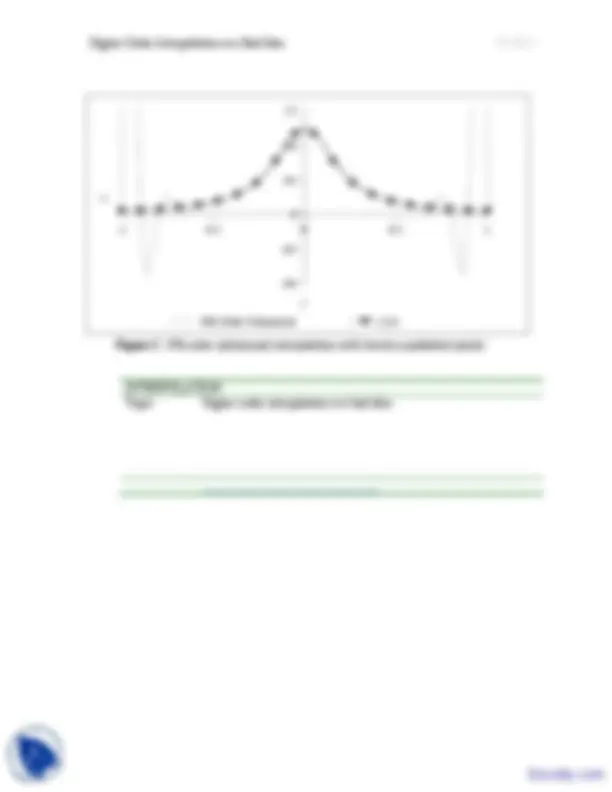



Study with the several resources on Docsity

Earn points by helping other students or get them with a premium plan


Prepare for your exams
Study with the several resources on Docsity

Earn points to download
Earn points by helping other students or get them with a premium plan
Community
Ask the community for help and clear up your study doubts
Discover the best universities in your country according to Docsity users
Free resources
Download our free guides on studying techniques, anxiety management strategies, and thesis advice from Docsity tutors
Main Points are: Higher Order Interpolation, Equidistant Points, Fifth Order Polynomial, Numerical Methods, Interpolation Module, Upward Velocity, Function of Time, Lagrangian Interpolation, Linear Interpolation
Typology: Exams
1 / 3

This page cannot be seen from the preview
Don't miss anything!


After reading this chapter, you should be able to:
Example
Peter: “Dr. Kaw, what is this you were talking about in class that higher order interpolation is a bad idea? More points, more accuracy; isn’t that the way it works?” Kaw: “Come on in. In 1901, Runge wanted to show that higher order interpolation is a bad
idea. He took this function, f ( x ) 1 /( 1 25 x^2 )in the domain [-1,1].”
Table 1. Six equidistant points of f ( x ) 1 /( 1 25 x^2 )
x y -1 0. -0.6 0. -0.2 0. 0.2 0. 0.6 0. 1 0.
Let us choose 6 points equidistantly between –1 and 1 as given in Table 1. You can interpolate these 6 data points by a 5th order polynomial. In Figure 1, I am then plotting the fifth order polynomial and the original function. See the oscillations in the interpolating polynomial. The polynomial does go through the six points, but at many other points it does not even come close to the original function. Just look at x 0. 85 , the value of the function is 0.052459, but the fifth order polynomial gives you a value of –0.055762. That is a whopping 206.30 % relative error and also note the opposite sign.
05.07.2 Chapter 05.
Figure 1 5th order polynomial interpolation with six equidistant points.
Peter: “Maybe you are not taking enough points. Six points may be too small a number to approximate the function.” Kaw: “How many points do you want to choose?” Peter: “Ok! Let’s get crazy. How about 20? That will give us a 19th order polynomial” Kaw: “I chose 20 points equidistantly in [-1,1]. It is not any better; the oscillations continue and get worse near the end points (Figure 2).” Peter: “Yes, it is wild. It, however, did do a better job of approximating the data except near the ends, but at the ends it is worse than before. At our chosen point, x 0. 85 , the value of the function is 0.052459, while we get –0.62944 from the 19th^ order polynomial, and that is a big whopper error of 1299.9 %. Higher order interpolation is a bad idea. What is the solution to the problem then? What if we choose more points close to the end points?” Kaw: “You are on to something. But, I need to go to teach my other class. You can get your question answered by seeing other anecdotes on the numerical methods web site. Just choose any interpolation module. You will get the answers to the questions you just asked.”
x
y
5 th^ Order Polynomial Function 1/(1+25 x 2 )